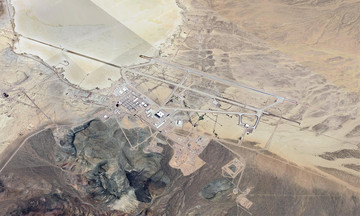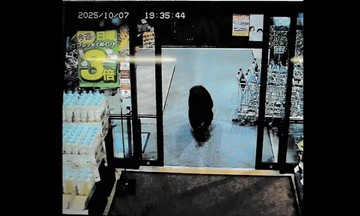The Acquisition, Technology & Logistics Agency (ATLA) of Japan's Ministry of Defense announced on 10/9 that a railgun mounted on the JS Asuka successfully hit a target at sea during tests conducted in June and July. "With the cooperation of the Japan Maritime Self-Defense Force (JMSDF), we conducted firing tests of the ship-mounted railgun in June and July. This is the first time a Japanese warship has successfully hit a target at sea using a railgun," the agency stated.
Released images show the prototype railgun firing from the JS Asuka towards the target. The railgun is surrounded by radar and electro-optical/infrared sensor clusters.
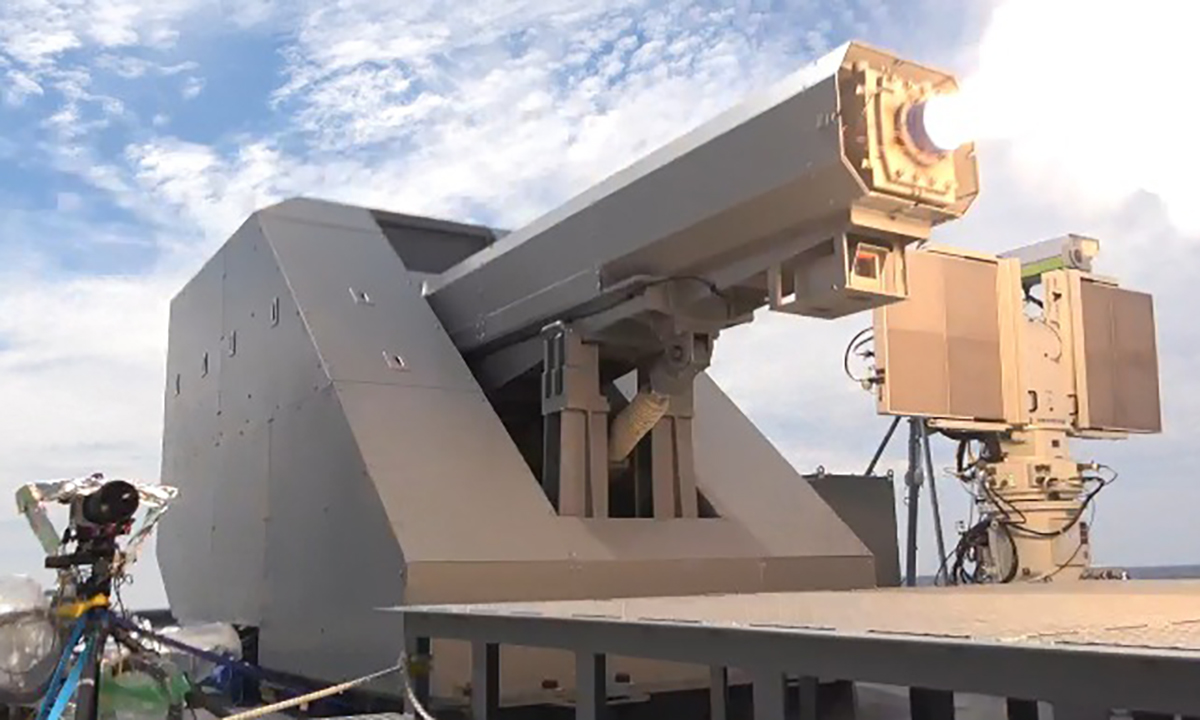 |
The prototype railgun on the JS Asuka firing during tests, as shown in a photo released on 10/9. Photo: ATLA |
The prototype railgun on the JS Asuka firing during tests, as shown in a photo released on 10/9. Photo: ATLA
Another image reveals a tugboat used as the target, with the railgun's crosshairs aimed at its smokestack. ATLA has not released images of the target after being hit or details about the damage inflicted.
Japan began developing railguns in the early 2010s and has conducted land-based tests. In 2023, ATLA announced a successful ship-based railgun test but did not disclose the vessel involved.
Railguns use electromagnetic energy to propel projectiles at hypersonic speeds, much faster than conventional artillery. Their extended range and rapid response are expected to enhance the capabilities of warships equipped with them.
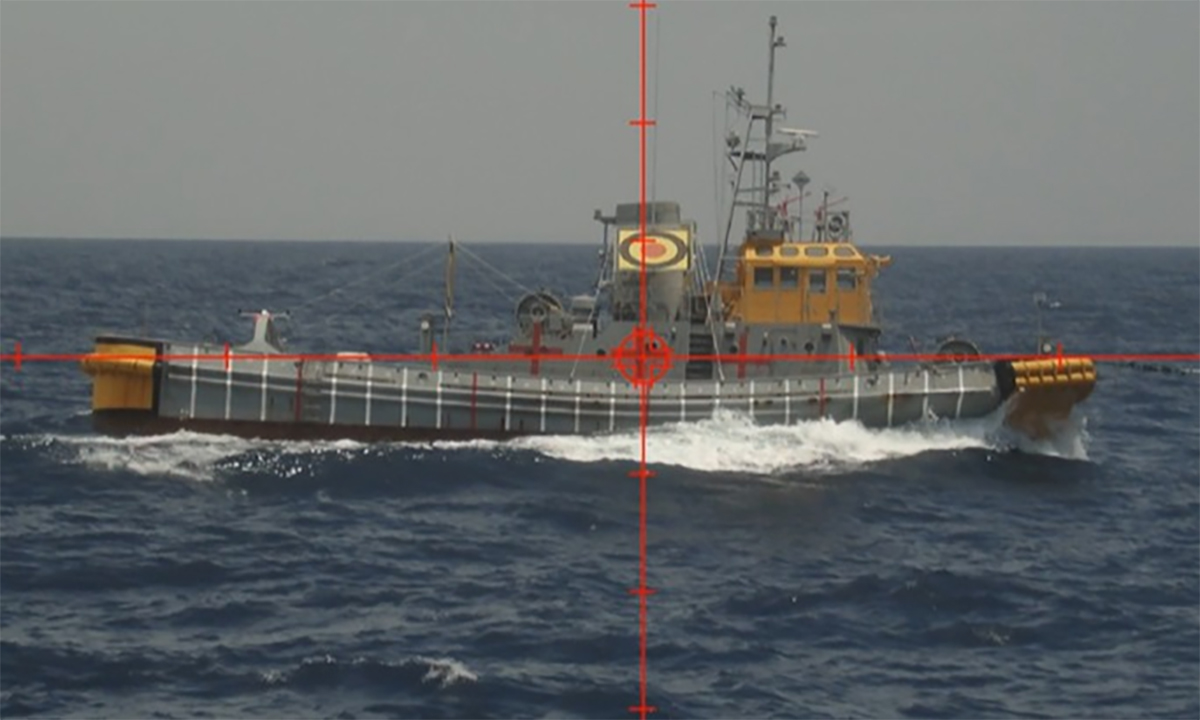 |
The target vessel used in Japan's railgun test. Photo: ATLA |
The target vessel used in Japan's railgun test. Photo: ATLA
However, railguns require substantial power and complex cooling systems, leading to their large size. The high projectile velocity causes rapid barrel wear, potentially affecting range and accuracy, and increasing the risk of serious incidents.
Several other countries, including the US, are also researching railguns. The US Navy began its program in 2005 but suspended it in 2022 after repeated delays in sea trials and unresolved technical issues. The US Army is now adapting the navy's railgun technology for a 155 mm howitzer with potential anti-aircraft applications. ATLA has reportedly approached the US Navy to discuss leveraging their research and proposed closer cooperation.
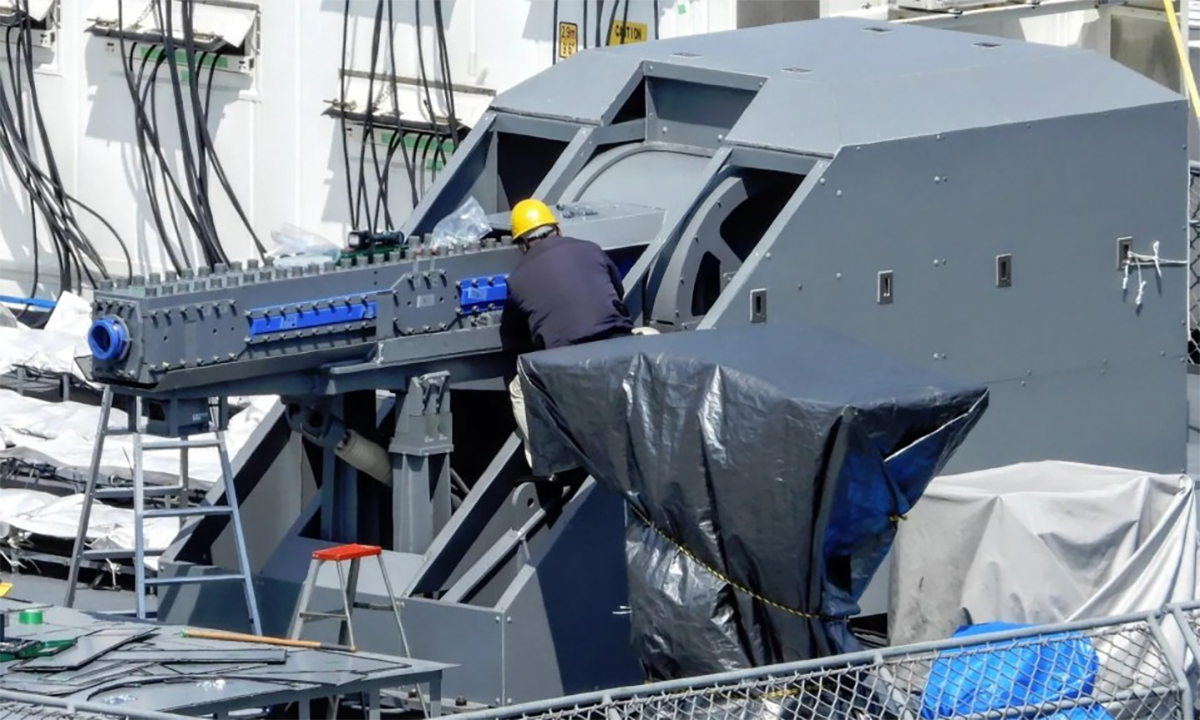 |
Technicians installing the prototype railgun on the JS Asuka. Photo: X/hnlehupy4nr6hrm |
Technicians installing the prototype railgun on the JS Asuka. Photo: X/hnlehupy4nr6hrm
The JS Asuka, commissioned in 3/1995, is a dedicated test ship for the JMSDF. It has a displacement of around 6,200 tons, a top speed of 50 km/h, and is equipped with eight Mk.41 vertical launch system cells, two triple torpedo launchers, a helicopter deck, and hangar.
Nguyen Tien (War Zone, AFP, AP)





